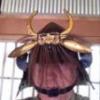-
Posts
13,121 -
Joined
-
Last visited
-
Days Won
225
Bugyotsuji last won the day on April 18
Bugyotsuji had the most liked content!

The recent visitors block is disabled and is not being shown to other users.

Bugyotsuji replied to estcrh's topic in General Nihonto Related Discussion

Bugyotsuji replied to fleetinbeing's topic in Katchu

